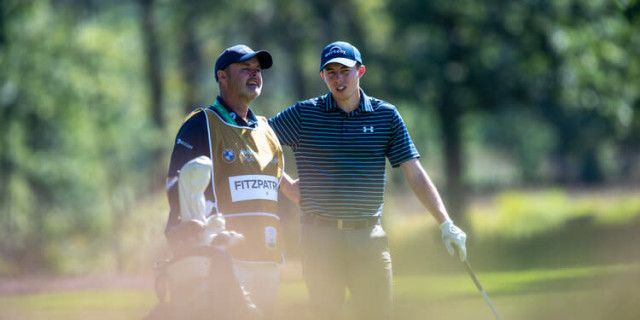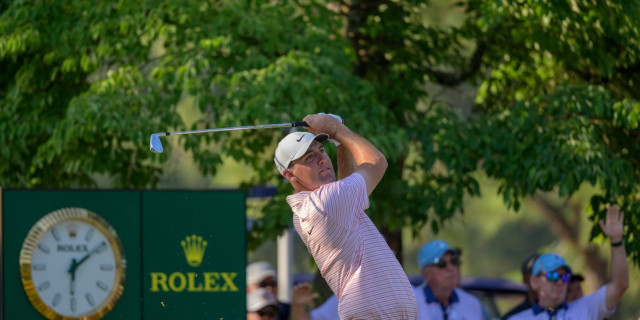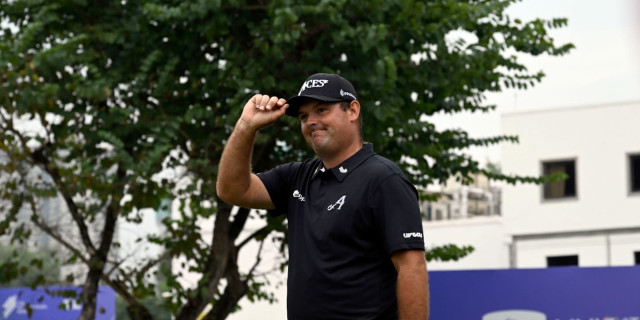
What It's Like to Have a Tour Caddie on Your Bag
Those watching professional golf at any level will be familiar with the caddie. Once a humble sidekick who carried out their duties with a simple mantra; turn up, keep up, shut up - many have now become as well-known as some of the world’s best players. Whether it’s Jim ‘Bones’ MacKay; who diligently stood alongside Phil Mickelson for more than two decades, or Billy Foster; who recently claimed his first major title as a caddie with Matt Fitzpatrick, following time on the bag for Lee Westwood, Darren Clarke, Thomas Bjorn, and Seve Ballesteros - we are often more acquainted with some of these bagmen than the tour’s up and coming stars.
But do they really help? And if so, by how much?
To try and dig a little deeper into how much your game can be improved by the use of a professional caddie, we sought out the guys at The Tour Experience - a collection of DP World and PGA TOUR caddies who offer their services during off weeks from their main loop. To really put their skills to the test, we arranged for our round together to be the qualifying tournament for the Brabazon Trophy, the English Amateur Strokeplay Championship.

(Billy Foster Recently Caddied Matt Fitzpatrick to Major Success - Image by Kevin Diss)
Player Background
To give a short run-through of the task at hand, the player (yours truly) was certainly at the weaker end of the competition’s field, with limited expectations for progression. A recent run of form in the early part of the year had seen my handicap drop to 1.2, thus ducking below the 2.0 limit for this tournament. However, it was an environment, and level of competition with which I was not overly familiar … to say the least! There were just over 100 players in the qualifying field, with around 20 making it through to the main event.
Caddie Background
Our caddie was Jamie Herbert - currently working for Eddie Pepperell, and counting the likes of Darren Clarke, Oliver Fisher and Min Woo Lee amongst his former employers. Jamie hadn’t seen the course before; the superb hidden gem at Stanton-on-the-Wolds, and so headed up the day before to walk the back side, before joining me for a 9-hole practice to familiarise himself with yardages, shot patterns, and my general lack of golfing ability.
The Round
As much as is possible, I’ll avoid running through each hole - mainly for my own sanity - but Stanton-on-the-Wolds begins with a relatively straightforward short par 4. Both Jamie and myself had mapped out yardages and pin positions overnight, and so knew that it should be a simple 5-iron, wedge to the middle of the green, hopefully setting up a stress-free par. What neither of us had banked on, was the near shank, which travelled around 120-yards in the air, before scuttling out some 40-yards behind the other two players in the group. A chunked 9-iron left a long putt from off the green, which was very fortunately nestled up near to the hole, allowing for par which kept the honour for the par 3, 2nd.
The next hole played 160-yards uphill, and was a touch into breeze. Not managing to shake off the nerves, the I overruled Jamie (maybe not the wisest of decisions…), opting to hit an 8-iron hard, rather than a smooth 7-iron, not trusting the touch in my shaky hands. This plan didn’t work particularly well, as we watched the ball fly the green, kicking off into an impossible spot, and leading to an early double bogey.
Morale was still good though, and a solid par followed on the next before coming to the par-4, 4th, a hole on which I managed to undo some properly good caddying. The fairway doglegs left-to-right, and Jamie talked me into hitting just a 6-iron from the tee after seeing playing partners hit through the dogleg into trouble. I asked: “even if I push this, does it cover the corner”, which was met with a firm and positive response of “absolutely”. A solidly-struck 9-iron later from 170-yards (again, picked by Jamie due to both wind direction and the maniacal swings I was making at every ball), we were left with a 15ft birdie putt. Having agreed the line, and with visions of clawing back one of the earlier dropped shots, we (I) decided to hit the ball too hard, missing the returning 6-footer to fall to 3-over par.
This unfortunately became somewhat of a theme; decently planned out approaches created birdie putts on each of the next six-holes, with none finding the bottom of the cup. By the time we reached the par-4 11th, when I had pushed a wedge into a greenside bunker trying to now force the issue, momentum had begun to fade. A bogey, followed by a five on the par-5 12th, despite reaching the front of the green in two, pretty much closed out hope of qualification.
There was a solitary birdie on 13, before another excellent piece of caddying on the 14th helped to rescue bogey - and very nearly an almost impossible par. After hitting the approach into some long grass 30-yards right of the green, the ball lay in what appeared to be an old animal burrow. Whilst I was considering just taking a lash at the ball to keep the game moving, Jamie slowed things down, grabbing the attention of a nearby referee, and helping to assist with the ruling which ultimately saw me hit one of the better shots of the day. Although another putt lipped out, the resulting bogey was at least one-shot better than would have been scored had I been left to my own devices - and probably would have seen me finish the rest of the round more poorly too.
A few more pars and bogeys coming in eventually saw me signing for a +6, four shots out of the qualifying mark at +2. Incidentally, another member of our three ball qualified on that number, requiring just 24 putts to my 34 - ultimately the difference between a trip to Saunton for the main tournament, and one spent back at home writing this article!
So, Does It Help?
I’ve thought long and hard about this, and the right way of answering that is fair to people considering bringing along a caddie to their own events.
There isn’t a world in which the end result of the day would have been different without a caddie. Needing 34 putts and only making one birdie when presented with more than 10 opportunities isn’t going to get the job done. The caddie can help with the line, but ultimately, the player is the one pulling the trigger.
In certain spots, like the clubbing on the 4th hole, or the ruling on 14, it’s likely that these individual holes would have been played more poorly without some outside counsel, and having somebody to bounce ideas off throughout the round was hugely beneficial - aided by Jamie’s extremely affable personality, which made a trip up to Nottingham to play an unknown course with two strangers a lot more enjoyable!
Selfishly though, the biggest benefit came following the round - both immediately and a few days later. Jamie talked about how our pace was just far too quick, not taking the time to get settled into things for fear of holding up others. Indeed, even after the horrific opening tee shot, we were marching off, strides ahead of the rest of the group, perhaps wanting everything to be over and done with already. Jamie talked about this, and set an exercise of trying to be last off the tee box in future competitions, allowing for a more normal amount of time to be spent over the ball (versus, rushing to it and waiting for others to catch up!). This should also help with the feeling of belonging at these bigger events, rather than being something of an inconvenience.
Lastly, we talked about the putts that didn’t drop, and it was reassuring to hear Jamie say “it was just one of those days”, because it also felt like that for me. It wasn’t that I putted terribly, they just didn’t happen to go in, and this reassurance probably saved me from needlessly readdressing my entire putting fundamentals.
Should You Give It A Go?
Absolutely. This isn’t a specific endorsement piece for The Tour Experience, but if you’re going to grab a caddie for the first time, we’d fully recommend giving them a shout. Having somebody who is a professional caddie adds a huge degree of confidence to the decision making, and you’re far less likely to have a falling out than you might be with a friend or relative.
If you’ve got a big event in your calendar, why not take it relatively seriously and give yourself every chance of success? The worst that can happen is that you’ll probably leave knowing more about your own game, and getting some advice from somebody who works with golfers for a living.
Additionally, there would be huge benefit in working with a caddie during a practice round, almost seeing it as an on-course playing lesson (with the benefit of not having to carry your own bag!). For every level of golfer this would be hugely beneficial, identifying areas of weakness, and opportunities for development - both technically and strategically.
So it’s a ringing endorsement from us. Whether you’re looking to sneak into an event slightly above your own capabilities, or just looking for a professional opinion on your own on-course habits, having a professional caddie along for the ride has very little, if any, downside … apart from them not being allowed to hole the putts for you!
Related Content
Tags: GOLFERS Golf daily picks









